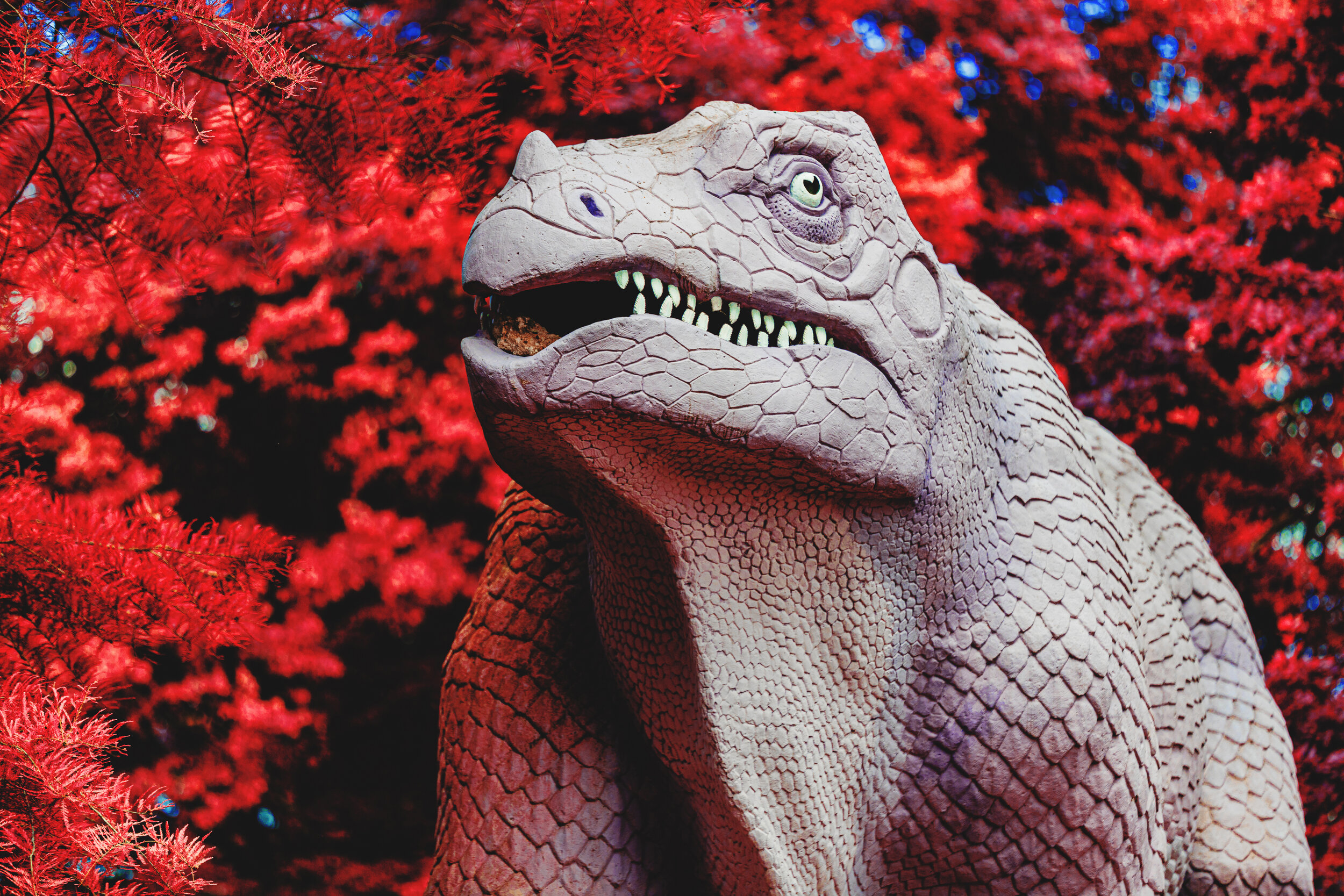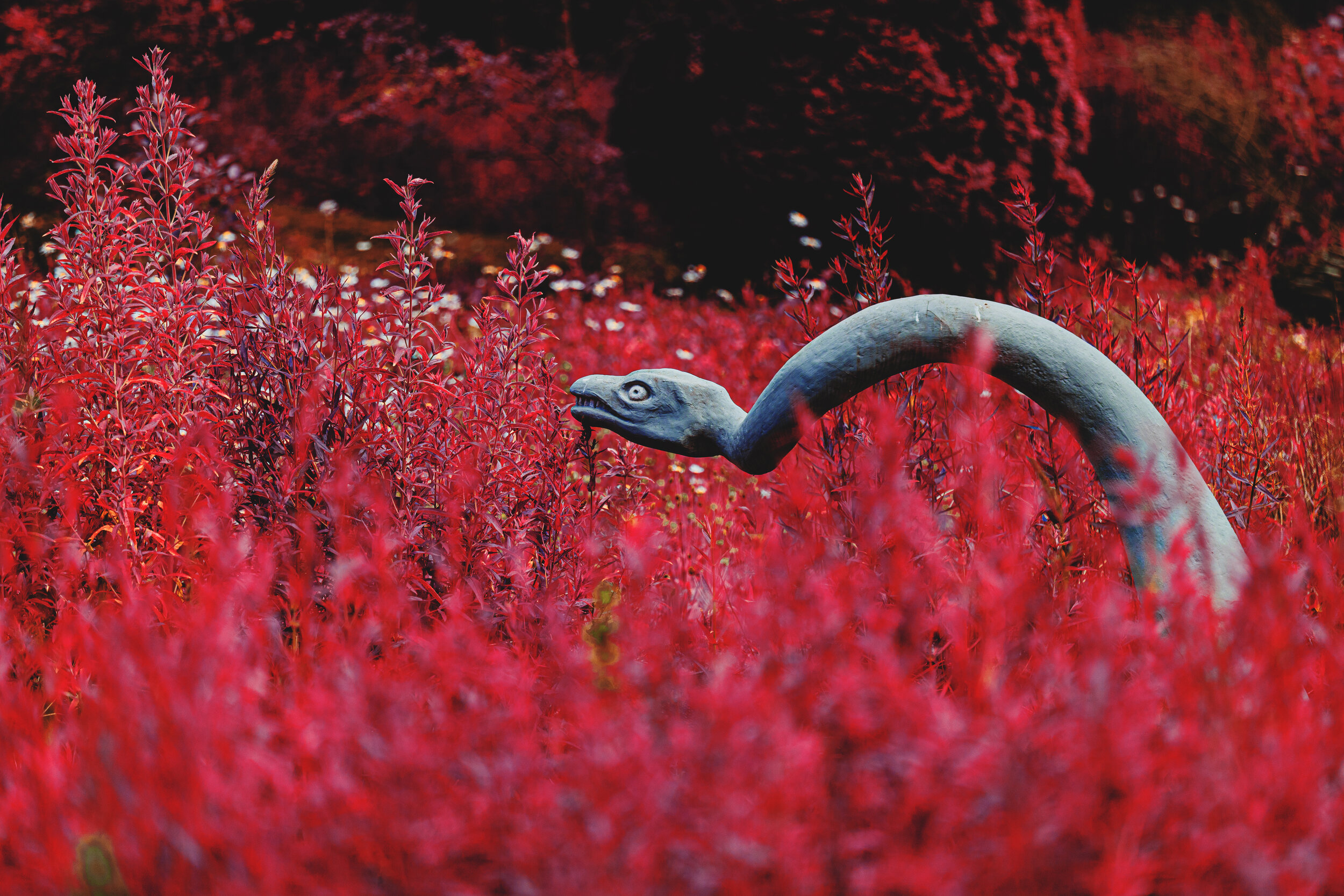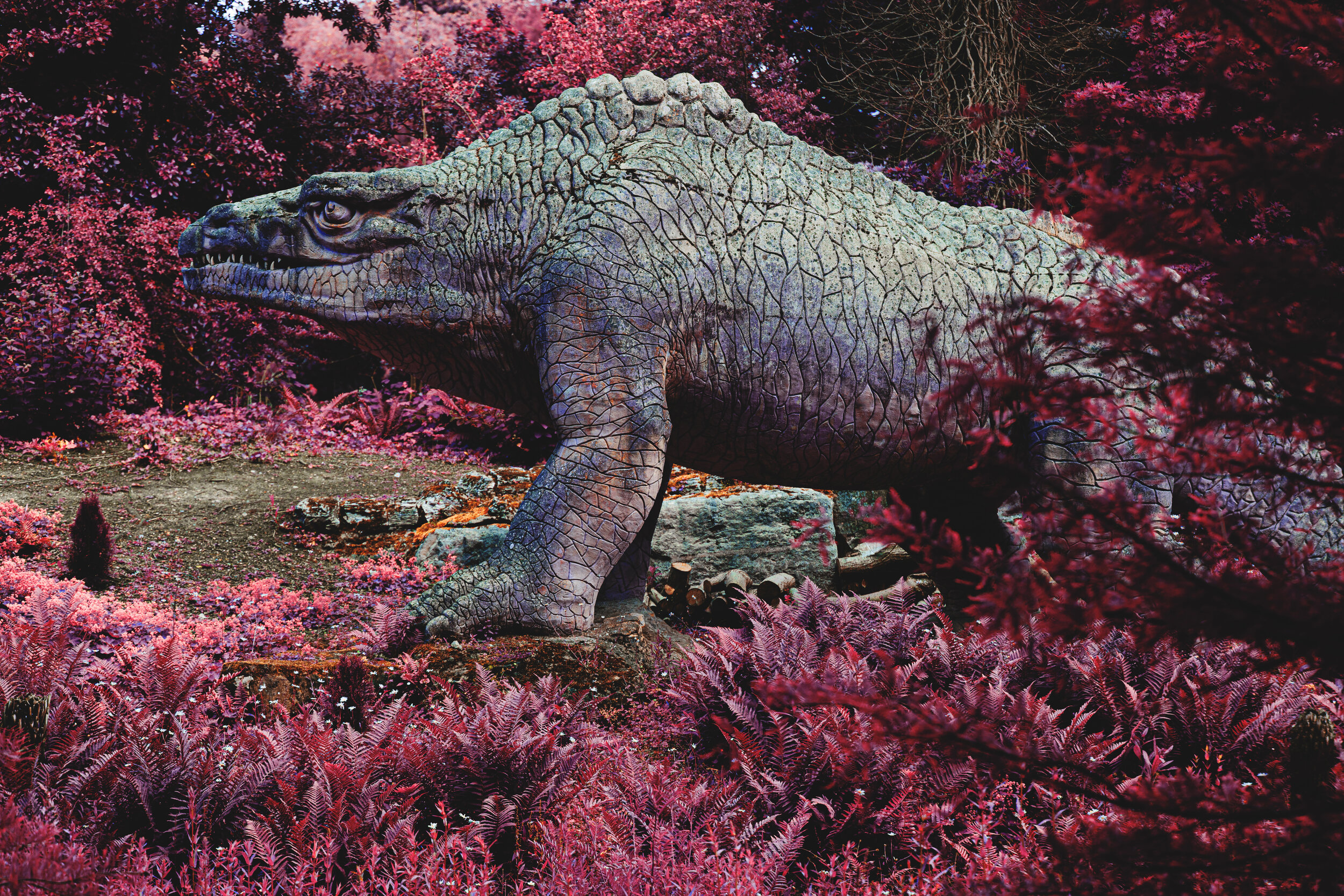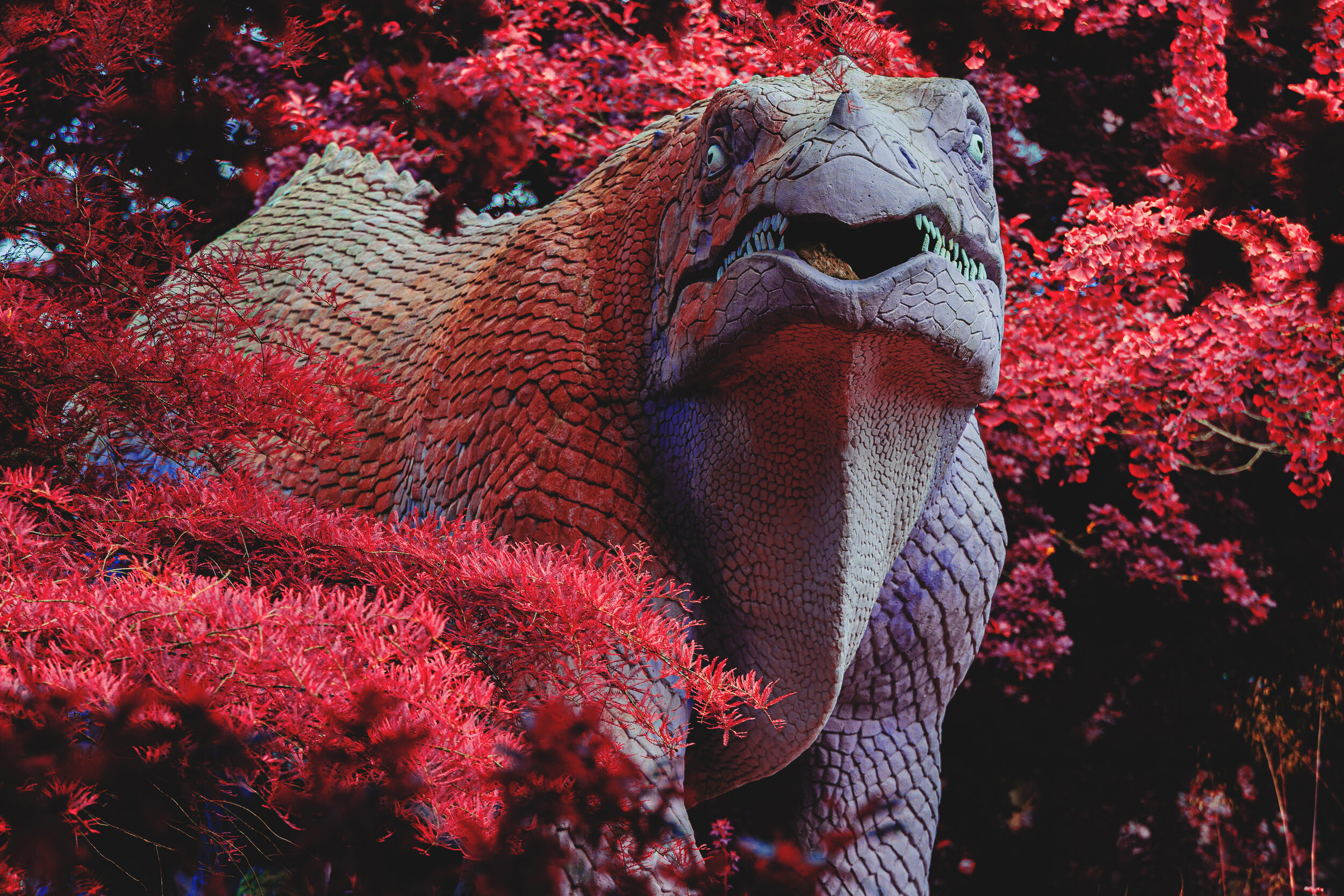Beware - there are monsters out there!









The Dinosaurs
The term “Dinosaurs” actually refers to the sum total of the approximately 30 palaeontological statues, five geological displays, and related landscaping in the vicinity of the tidal lake in Crystal Palace Park.
Of the 30+ statues, only four represent dinosaurs in the strict, technical zoological sense of the word (the two Iguanodon, the Hylaeosaurus and the Megalosaurus). The statues also include plesiosaurs and icthyosaurs discovered by Mary Anning in Lyme Regis, as well as pterodactyls, crocodilians, amphibians and mammals, such as a South American Megatherium (giant ground sloth) brought back to Britain by Charles Darwin on his voyage on HMS Beagle.
This section of the park was constructed in 1853-1855 and has remained largely in the places we find them today. The statues represent the first ever attempt anywhere in the world to model extinct animals as full-scale, three-dimensional, active creatures from fossil remains.
The sculptor, Benjamin Waterhouse Hawkins, was a natural history illustrator and sculptor of international reputation. His work combined the pursuit of technical accuracy and animate expression. His sculptures were set in a landscape designed by Joseph Paxton that also included hillside illustrations of economic geology created by Professor David Ansted. Queen Victoria and Prince Albert were fascinated by the dinosaur displays in Crystal Palace, and they visited the site several times.
Some of the statues are wildly inaccurate compared with modern interpretations. Who decided what they should look like is a subject of historical debate. However, research by historians shows clearly that experts in the 1850s had different interpretations, and these differences in view are reflected in the statues on display. The story of these evolving interpretations demonstrates how scientific ideas evolve when new evidence and ideas comes to light.
This ‘Baxter’ print shows the Crystal Palace Park as conceived prior to opening in 1854. This landscape for dinosaurs imagines a tour underway.
The statues were created on site in Crystal Palace Park. In 1854, the park opened as a commercial amusement. This included the spectacular glasshouse (made from the glasshouse in the 1851 Great Exhibition in Hyde Park, London). The Crystal Palace glasshouse burned to the ground in 1936. It is no longer on view. However, the scale of that building is easy to see when visiting the park today, as some of the terraces and decorative sphinxes remain. The park also included elaborate landscape and fountain works designed by Joseph Paxton.
The statues are listed on Historic England’s National Heritage List for England as Grade 1 monuments. This is the most important rating for that list, and it is reserved for sites of international importance. The statues are key objects in the history of science. Many statues are based on specimens currently on display in the Natural History Museum, the Oxford Museum of Natural History, and other natural history museums in the UK.
Much has been written about the Crystal Palace Dinosaurs (bibliography).
Find out more and become a friend of the dinosaurs here
Infrared photography
A LUT created by Mathieu Stern was used to create this distinctive look to the photographs. Below is an example of the original image.



